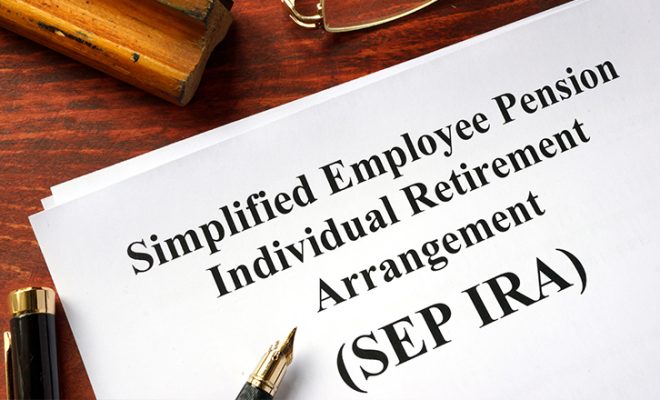Catch-Up Contribution Limits for Various Retirement Plans

Retirement is a time in your life when you can relax, pursue your hobbies, travel and spend time with your family and friends. For most people, retirement does not entail working or having a side hustle that can fetch them an income. Hence, saving up in advance is a crucial activity that you must pay attention to before you retire. Retirement accounts, such as the individual retirement account (IRA), 401(k) retirement account, health savings account (HSA), thrift savings plan, etc. are some popular choices that have helped several retirees sustain them in their golden years. These accounts offer security, flexibility, and growth of your money. A financial advisor can help you to understand the many tax benefits of saving in these accounts that can help you maximize your money. However, just like the numerous advantages, these accounts come with certain rules, restrictions, and limitations, too.
Each account comes with a set of rules pertaining to the withdrawal and contribution of money. This implies that you can withdraw your funds subject to certain age limitations and uses. Similarly, you can also contribute only up to a fixed limit annually. These limits are set by the internal revenue services (IRS) and can be altered by the organization every now and then.
This article talks about the catch contribution limits for various retirement plans.
What are catch up contributions?
As stated above, every retirement account has a limit fixed by the IRS that determines the amount of money you can save in the account in a year. However, the IRS offers people above the age of 50 an extended limit to contribute to their retirement accounts over and above the general limit fixed for everybody. Hence, there is a standard limit for all people and a catch up contribution limit for people aged 50 or more.
Catch up contributions are a way to help older people save more for their retirement. As you move closer to your golden years, you may need to speed things up and save more in the limited number of working years you have at hand. Catch up contributions can help you bridge this gap.
What are the catch up contributions for each retirement account as of 2021?
Here are the catch contribution limits for each retirement account as of 2021:
- 401(k) retirement account
A 401(k) retirement plan is an employer-sponsored retirement plan that allows you to save for your retired years along with some tax benefits. Here are the catch up contribution limits for a 401(k) retirement account:
| Year | Standard contribution | Catch up contribution |
| 2021 | $19,500 | $6,500 |
- Traditional IRA
An IRA is also a retirement account. While a 401(k) is offered by an employer, an IRA can be opened with a broker or bank. An IRA can be of multiple types. A Traditional IRA allows you to contribute your pre-tax dollars and grow your funds tax-deferred. Your withdrawals are taxed later as per your current income after the age of 59.5. Here are the catch up contribution limits for a Traditional IRA:
| Year | Standard contribution | Catch up contribution |
| 2021 | $6,000 | $1,000 |
- Roth IRA
A Roth IRA lets you contribute your after-tax dollars. This way, your money grows tax free and the withdrawals are also not taxed when withdrawn after the age of 59.5. Here are the catch up contribution limits for an Roth IRA:
| Year | Standard contribution | Catch up contribution |
| 2021 | $6,000 | $1,000 |
- SIMPLE IRA
This retirement account is another type of IRA that can be used by small businesses with 100 or fewer employees. Here are the catch up contribution limits for a SIMPLE IRA:
| Year | Standard contribution | Catch up contribution |
| 2021 | $13,500 | $3,000 |
- Health savings account (HSA)
An HSA is a tax advantaged savings account that can be used for healthcare expenses in retirement. Here are the catch up contribution limits for an HSA:
| Type of coverage | Self only | Family coverage |
| Standard contribution | $3,600 | $7,200 |
| Catch up contribution | $1,000 | $1,000 |
- 403(b) retirement account
The 403(b) account is a retirement account used by the employees of some public schools and other tax-exempt organizations. This account can be used by qualified teachers, librarians, school administrators, nurses, doctors, professors, and government employees. The catch up contribution limits for a 403(b) retirement account are decided on the basis of a number of factors. Unlike other retirement accounts, the catch up contribution is not the same for all investors investing in a 403(b) account. Here are some things to note in this regard:
You can make a catch up contribution only if you have been working for the same employer for at least 15 years.
The amount should be less than the following:
- $3,000
- $15,000 minus the total number of catch-up contributions made in the previous years
- $5,000 multiplied by the total number of years that you have worked for the same employer, minus the total catch-up contributions made in the prior years
The maximum contribution made by both the employer and the employee cannot be more than $58,000 or your total salary. This also includes any bonus or benefits earned.
- 457(b)
This is a retirement account used by state and local government employees. If you use a 457(b) plan, you can make a catch-up contribution three years before the year of your retirement. Here are some things to note:
The catch contribution should be less than the following:
- Twice of the basic annual limit i.e. up to $39,000
- $19,500 plus the basic annual limit ($19,500) not used in previous years
The maximum contribution made by both the employer and the employee cannot be more than $19,500 or your total salary. This also includes any bonus or benefits earned.
- Thrift savings plan (TSP)
A thrift savings plan is a retirement account offered to federal employees. Here are the catch up contribution limits for a TSP:
| Year | Standard contribution | Catch up contribution |
| 2021 | $19,500 | $6,500 |
SPONSORED WISERADVISOR
What are the benefits of having catch up contributions?
There are many advantages of catch up contributions, such as:
- They help you save more money: Catch up contributions can help you increase your retirement savings pool substantially. This can be a great way to build your retirement corpus, especially since you are very close to your retirement in your 50s and have a limited time to prepare for your golden years. For instance, even if you contribute $6,500 per year for 10 years, between the ages of 50 and 60, you can end up saving $65,000. This, combined with your other savings, can help you stay financially afloat for a long time.
- They help you save tax: Retirement plans offer many tax benefits and catch up contributions can help you further maximize these. When you contribute more to a retirement account, your taxable income reduces for the year. This way, you fall into a lower tax slab and get taxed accordingly. Hence, not only do you save more for the future but also lower your tax expenditure in the present.
- They help you ascertain your retirement needs: Catch up contributions are a gentle reminder for most investors to recalculate and revisit their retirement planning needs. When you make a catch up contribution, you end up reassessing your requirements and can make timely changes to your plan to avoid last minute inadequacies.
- Your employer may match your contribution: Several employers match their employee’s contributions. So, if you contribute extra with a catch up contribution, your employer is likely to contribute the same. As a result, you will end up earning more.
How can you make catch up contributions?
You can contact your plan administrator or employer (in the case of an employer sponsored plan) to know more about how to make a catch up contribution. Most plans let you make online catch up contributions, if you qualify for them.
What are some important things to note about catch up contributions?
Here are some things you should keep in mind:
- Catch up contributions are fixed by the IRS and not the employer.
- Catch up contributions can only be used by investors over the age of 50.
- Catch up contribution limits may change every now and then. Therefore, it may be advised to stay up to date on the latest limits or contact a financial advisor for the same.
To sum it up
Catch up contributions are an excellent way to grow your savings and reduce your tax liability. They let you save more and amass a high corpus that can be used to cover your retirement needs. Moreover, since most retirement accounts offer a catch up contribution, investors from all walks of life and industries can make the most of this option and use it to their advantage. However, keep in mind that these limits can often change, so it is crucial to be up to date at all times.
If you are looking to make a catch up contribution to your retirement accounts but need some help to determine your limit , you can get in touch with a professional financial advisor in your area and maximize your savings for retirement.











